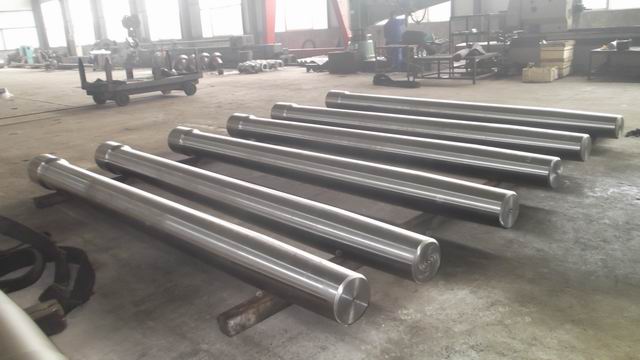Open forging refers to the processing method of forging that uses simple universal tools or directly applies external forces between the upper and lower anvils of the forging equipment to deform the billet and obtain the required geometric shape and internal quality. Forgings produced using the open forging method are called open forgings.
Open forging mainly produces small batches of forgings, and uses forging equipment such as hammers and hydraulic presses to form and process the blanks, obtaining qualified forgings. The basic processes of open forging include upsetting, elongation, punching, cutting, bending, twisting, displacement, and forging. Open forging adopts hot forging method.
The open forging process includes basic process, auxiliary process, and finishing process.
The basic processes of open forging include upsetting, elongation, punching, bending, cutting, twisting, displacement, and forging. In actual production, the most commonly used processes are upsetting, elongation, and punching.
Auxiliary processes: Pre deformation processes, such as pressing jaws, pressing steel ingot edges, cutting shoulders, etc.
Finishing process: The process of reducing surface defects of forgings, such as removing unevenness and shaping the surface of forgings.
Advantages:
(1) Forging has great flexibility, which can produce small parts of less than 100kg and heavy parts of up to 300t;
(2) The tools used are simple general tools;
(3) Forging forming is the gradual deformation of the billet in different regions, therefore, the tonnage of forging equipment required for forging the same forging is much smaller than that of model forging;
(4) Low precision requirements for equipment;
(5) Short production cycle.
Disadvantages and limitations:
(1) The production efficiency is much lower than that of model forging;
(2) Forgings have simple shapes, low dimensional accuracy, and rough surfaces; Workers have high labor intensity and require a high level of technical proficiency;
(3) It is not easy to achieve mechanization and automation.
Defects often caused by improper forging process
Defects caused by improper forging process usually include the following:
Large grains: Large grains are usually caused by high initial forging temperature and insufficient deformation degree, high final forging temperature, or deformation degree falling into the critical deformation zone. Excessive deformation of aluminum alloy, resulting in texture formation; When the deformation temperature of high-temperature alloys is too low, the formation of mixed deformation structures may also cause coarse grains. Coarse grain size will reduce the plasticity and toughness of forgings, and significantly reduce their fatigue performance.
Uneven grain size: Uneven grain size refers to the fact that certain parts of a forging have particularly coarse grains, while others have smaller grains. The main reason for uneven grain size is the uneven deformation of the billet, which results in varying degrees of grain fragmentation, or the deformation degree of local areas falling into the critical deformation zone, or the local work hardening of high-temperature alloys, or the local coarsening of grains during quenching and heating. Heat-resistant steel and high-temperature alloys are particularly sensitive to uneven grain size. Uneven grain size will significantly reduce the durability and fatigue performance of forgings.
Cold hardening phenomenon: During forging deformation, due to low temperature or rapid deformation rate, as well as rapid cooling after forging, the softening caused by recrystallization may not keep up with the strengthening (hardening) caused by deformation, resulting in a partial retention of cold deformation structure inside the forging after hot forging. The presence of this organization improves the strength and hardness of forgings, but reduces plasticity and toughness. Severe cold hardening may cause forging cracks.
Cracks: Forging cracks are usually caused by significant tensile stress, shear stress, or additional tensile stress during forging. The crack usually occurs in the area with the highest stress and thinnest thickness of the billet. If there are microcracks on the surface and inside of the billet, or there are organizational defects inside the billet, or if the thermal processing temperature is not appropriate, resulting in a decrease in material plasticity, or if the deformation speed is too fast or the deformation degree is too large, exceeding the allowable plastic pointer of the material, cracks may occur during processes such as coarsening, elongation, punching, expanding, bending, and extrusion.
Post time: Sep-19-2023





